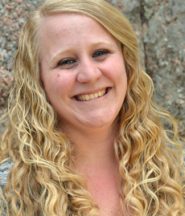An Overview
Major: Geology
Academic Affiliation: Rocky Mountain College
Biography
Growing up in Western Nebraska, Stacy has been interested in the Earth and how it really works from a very young age. With the help of some very enthusiastic teachers throughout the years, she had learned to embrace her burning questions about the Earth and its processes. She is a student at Rocky Mountain College in Montana, where she is completing her Bachelor of Science in Geology with particular interest in hydrology and climate change. This summer she had the opportunity to work along side Dr. Kamini Singha, associate professor in hydrology, and graduate student Aaron Bandler from the Colorado School of Mines. The project included assessing aspect control on weathering bedrock, in the Boulder Creek Critical Zone, by using seismic anisotropy velocity models to determine fracture orientation on adjacent hillslopes.
Abstract
Assessing aspect control on adjacent weathering hillslopes using seismic anisotropy velocity models within the Boulder Creek Critical Zone Observatory, Colorado
Seismic anisotropy on adjacent hillslopes within the Boulder Creek Critical Zone Observatory (BcCZO), Colorado can help determine the Critical Zone (CZ) structure and its connection with hydrologic infiltration pathways with respect to time. Previous studies suggest that depth to weathering is deeper on the north-facing than on the south-facing slope. However recent surveys of seismic velocities and electrical resistivity of Gordon Gulch imply that there are parallel weathering depths on each hillslope. Our research was conducted using the Shallow Seismic Refraction (SSR) method to determine depth to weathering, which included using a 24-channel Geode Seismometer by Geometrics connected to geophones. Preliminary results indicate that direct-wave velocities are on average at or below 500 m/s, with little variation in orientation on each slope. Deeper apparent wave velocities for each slope are on average at or above 1,000 m/s, with prominent E-W fracture orientations. Implications of these findings are that the loose unconsolidated, matrix supported material is regolith and has no fracture orientation. The material below this appears to be more of a compact, E-W fracture oriented material with faster velocities consistent with saprolite. Recommendations for future work include using further spaced geophones for the SSR method to increase the depth. In addition, ground-penetrating radar (GPR) could accompany infiltration experiments to determine where water is moving and how it’s moving within the soils. This will help with understanding the depth to the water table and how water travels along the north-facing and south-facing slopes, which leads to the weathering of the bedrock.


